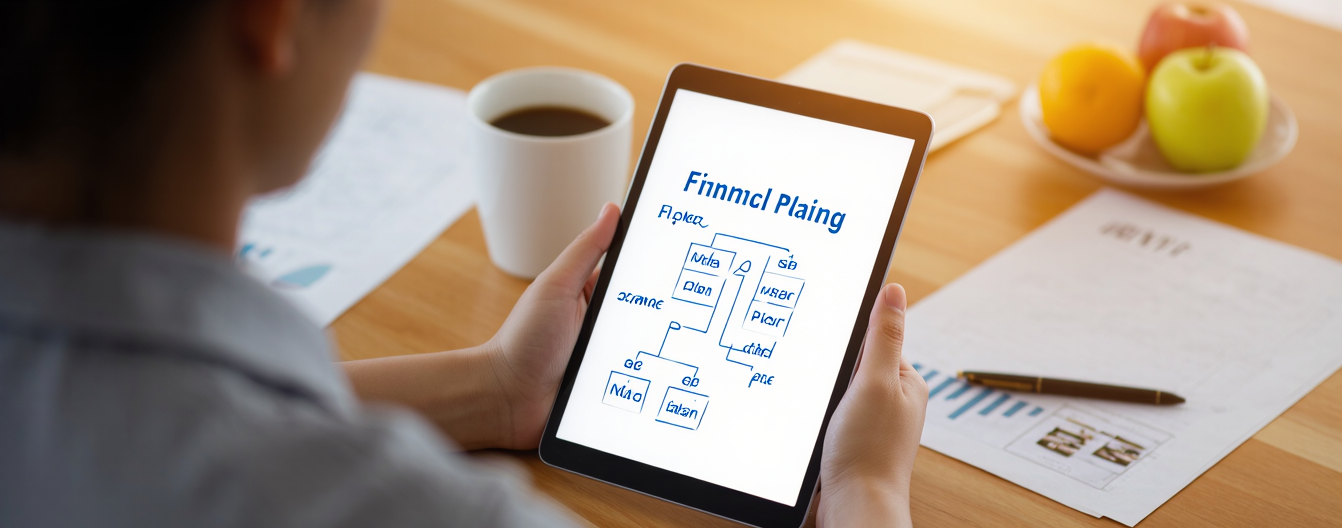A personal financial plan is more than just a budget—it’s a complete roadmap that helps you take control of your money, achieve your goals, and reduce stress. Whether you’re trying to get out of debt, save for a home, or retire early, a solid financial plan can help you get there faster and smarter.
Let’s break down how to build one step by step.
What Is a Personal Financial Plan?
A personal financial plan is a customized strategy for managing your money, based on your:
- Income
- Expenses
- Debts
- Savings goals
- Investments
- Life priorities
It brings all the pieces of your financial life together in one place and helps you make intentional decisions every month.
Step 1: Define Your Financial Goals
Start by asking yourself:
- What do I want to achieve with my money?
- What do I want short term (next 12 months)?
- What do I want long term (5–10 years or more)?
Examples of short-term goals:
- Build an emergency fund
- Pay off credit card debt
- Save for a trip
- Buy new furniture or electronics
Examples of long-term goals:
- Buy a house
- Save for retirement
- Pay off student loans
- Start a business
Write your goals down and set deadlines. This gives your money purpose.
Step 2: Assess Your Current Financial Situation
Take a full snapshot of where you are today:
- Income: All sources, after taxes
- Expenses: Monthly fixed + variable costs
- Debts: Credit cards, loans, mortgages, etc.
- Assets: Cash, savings, investments, property
- Net worth: Assets minus debts
Use this data to understand your starting point.
Step 3: Build a Budget That Supports Your Goals
A budget is your action plan. Choose a style that works for you:
- 50/30/20 method
- Zero-based budgeting
- Envelope method
- Digital apps (Mint, YNAB, EveryDollar)
Your budget should prioritize:
- Essentials
- Debt repayment
- Savings
- Extras and lifestyle
Every dollar should have a job. Align your spending with your priorities.
Step 4: Create an Emergency Fund
Life is unpredictable. A solid financial plan includes a safety net:
- Start with $500 to $1,000
- Then aim for 3–6 months of expenses
- Keep it in a separate, easy-access savings account
An emergency fund prevents you from relying on credit during tough times.
Step 5: Pay Off Debt Strategically
Debt slows down your financial progress. Choose a payoff strategy:
- Snowball method: Pay smallest balance first
- Avalanche method: Pay highest interest first
Focus on one debt at a time while making minimum payments on others. Once you’re debt-free, redirect that money toward savings or investments.
Step 6: Start Saving for Big Goals
Set up savings for specific goals:
- Travel fund
- Car replacement
- Wedding or education
- House down payment
Use separate savings accounts or savings buckets. Automate transfers right after payday.
Step 7: Begin Investing (Even a Little)
Once you have your emergency fund and no high-interest debt, start investing:
- Open a retirement account (IRA, 401(k))
- Consider low-cost index funds or ETFs
- Use investment apps with low fees (like Acorns or Fidelity)
- Start small—even $20/month matters
Investing grows your money faster than saving alone, thanks to compound interest.
Step 8: Protect What You’re Building
Part of planning your finances is protecting them:
- Get health insurance
- Review life and disability insurance if you have dependents
- Create a will or basic estate plan
- Use strong passwords and identity protection
These steps may not be exciting, but they’re crucial.
Step 9: Review and Adjust Regularly
Your plan should evolve as your life changes. Review it:
- Every month (budget and goals check-in)
- Every 6 months (big picture review)
- After major life events (new job, marriage, baby)
A good plan is flexible and realistic—not rigid.
Step 10: Track Your Progress and Celebrate Wins
Mark milestones along the way:
- Paid off a credit card? Celebrate.
- Hit a savings goal? Treat yourself responsibly.
- Stuck to your budget 3 months in a row? That’s huge.
Progress builds momentum. Acknowledge it.
Final Thoughts: Your Plan, Your Life
You don’t need to be a financial expert to take control—you just need a clear plan and the commitment to follow it.
Start where you are. Use what you have. Do what you can.
Your future self will thank you.
